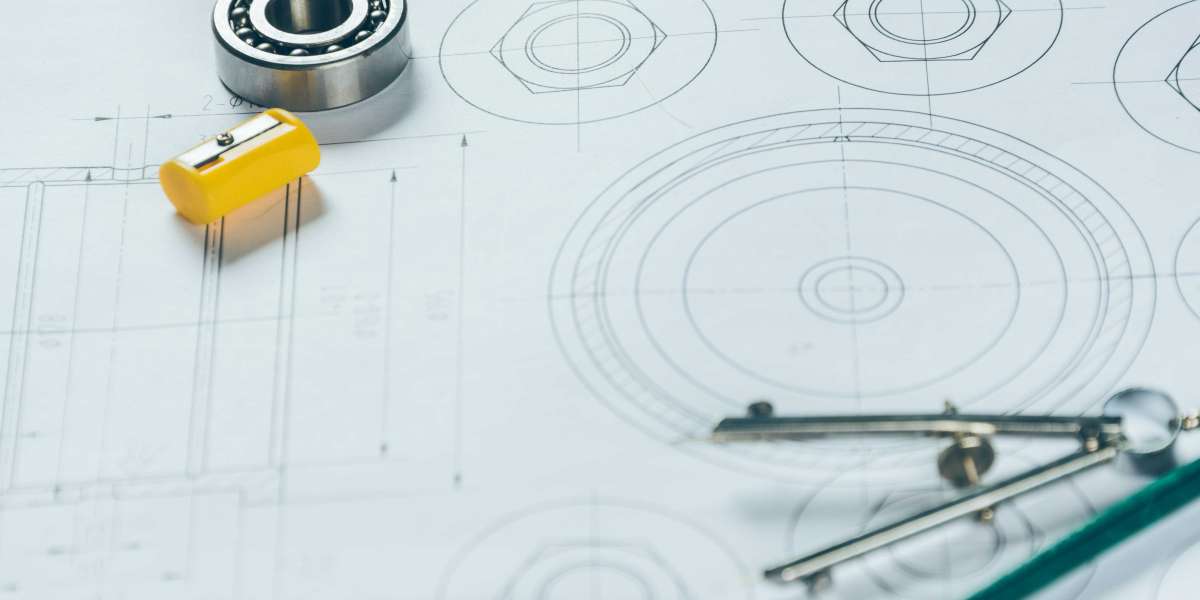In the world of engineering and product design, clarity and accuracy are non-negotiable. At the heart of every complex product lies a mechanical general assembly drawing the blueprint that brings together all components into one cohesive view. It provides engineers, manufacturers, and technicians with a clear understanding of how each part fits, functions, and interacts within the whole system.
Whether you’re designing HVAC equipment, machinery, or industrial products, mastering the art of producing accurate general assembly drawings is critical. Poorly prepared drawings lead to costly miscommunication, production delays, and errors during assembly. On the other hand, accurate and professional CAD drafting services ensure smooth workflows from design to manufacturing.
This guide explores best practices for accurate Mechanical General Assembly Drawing, highlighting tools, techniques, and industry insights every engineer must know.
What is a Mechanical General Assembly Drawing?
A mechanical general assembly drawing (often called GA drawing) is a detailed diagram that shows how multiple parts come together to form a complete product or system. Unlike part drawings, which focus on individual components, assembly drawings illustrate:
The overall arrangement of parts and subassemblies
How components are connected or joined
Physical relationships between parts (fit, alignment, clearances)
Dimensions, tolerances, and references
Notes on materials, fasteners, and processes
In short, GA drawings bridge the gap between design and production, ensuring that everyone—from design engineers to machinists and installers works with the same information.
Why Accuracy in GA Drawings Matters
Accurate GA drawings directly impact efficiency, cost, and product quality. Here’s why they are essential:
Manufacturing clarity: Workers rely on GA drawings to assemble parts correctly without guesswork.
Reduced rework: Errors caught at the drawing stage prevent expensive fixes on the shop floor.
Improved communication: Drawings serve as a universal language across design, engineering, and production teams.
Regulatory compliance: Precise documentation helps meet industry standards and certifications.
Product lifecycle value: GA drawings remain valuable references for future maintenance, upgrades, or troubleshooting.
Best Practices for Accurate Mechanical General Assembly Drawing
1. Start with Clear Design Intent
Every GA drawing must communicate the purpose of the design. Before drafting begins, clarify:
What is the function of the assembly?
Which parts are critical to performance?
What information must be highlighted for manufacturing teams?
By defining design intent early, you avoid unnecessary details and focus on clarity.
2. Use the Right CAD Drafting Tools
Accuracy depends on using the right tools. Today’s most common software platforms include:
AutoCAD – widely used for 2D drafting of assembly layouts.
SolidWorks – popular for 3D modeling and mechanical design.
PTC Creo CATIA – used for advanced product assemblies in aerospace and automotive.
Revit Inventor – applied in HVAC CAD Drafting and MEP systems.
Professional CAD Drawing Services ensure these tools are used to deliver precise, error-free documentation.
3. Maintain Standardized Drawing Conventions
Consistency is key to accuracy. Always follow established standards such as:
ASME Y14.5 for dimensioning and tolerancing
ISO drawing standards for international collaboration
Industry-specific codes for HVAC Equipment Design, piping, or machinery
Standardization reduces misinterpretation and keeps every stakeholder aligned.
4. Incorporate Proper Dimensioning and Tolerances
General assembly drawings should strike a balance: include critical dimensions but avoid clutter. Best practices include:
Dimension only what’s necessary for assembly.
Use GDT (Geometric Dimensioning and Tolerancing) for precision.
Highlight clearance and interference fits.
Provide reference dimensions to guide installers.
Incorrect or missing tolerances are among the most common causes of manufacturing delays.
5. Include Exploded Views Where Necessary
Exploded views are a powerful way to illustrate how parts fit together. They:
Show spatial relationships clearly.
Help technicians visualize assembly sequences.
Reduce assembly errors in complex systems.
For example, in HVAC CAD drafting, exploded views of duct systems and equipment assemblies allow contractors to better understand component placement.
6. Emphasize Bill of Materials (BOM) Integration
Every GA drawing should link seamlessly with a Bill of Materials (BOM). The BOM:
Lists all components and subassemblies.
Provides part numbers, quantities, and specifications.
Ensures procurement teams order the correct items.
Modern CAD tools allow automatic BOM generation directly from assembly models—saving time and improving accuracy.
7. Ensure Clear Annotation and Notes
Annotations are essential for guiding assembly teams. Best practices include:
Using consistent symbols and abbreviations.
Adding callouts for welding, fastening, or special assembly steps.
Keeping notes concise but informative.
Clarity in annotations prevents misinterpretation, especially in multi-disciplinary projects involving HVAC equipment design or industrial machinery.
8. Validate with 3D Modeling and Simulation
Before finalizing a GA drawing, validate the design using 3D modeling and simulation tools:
Check for interferences and clashes.
Run motion studies for moving assemblies.
Simulate stress points and clearances.
These steps minimize design flaws and ensure the GA drawing reflects a manufacturable product.
9. Collaborate Across Disciplines
Accurate GA drawings require input from multiple teams, including mechanical, electrical, and civil engineers. Practices to follow:
Use cloud-based collaboration tools for real-time updates.
Establish review cycles with all stakeholders.
Conduct clash detection sessions early in the design process.
Collaboration ensures the GA drawing integrates seamlessly with other design disciplines.
10. Conduct Regular Quality Checks
Before releasing a GA drawing to production, always perform rigorous quality checks:
Verify dimensions and tolerances.
Cross-check against the design model.
Ensure compliance with drafting standards.
Review annotations, BOM links, and revision history.
Many companies outsource this step to specialized CAD drafting services in USA, ensuring error-free deliverables.
Common Challenges in Mechanical General Assembly Drawing
Even experienced engineers face challenges in producing accurate GA drawings. Some of the most common include:
Overloaded drawings with excessive detail
Missing critical dimensions or tolerances
Poor integration with electrical or HVAC systems
Inconsistent drafting practices across teams
Difficulty managing frequent design revisions
Recognizing these challenges helps in applying the best practices outlined above.
Role of CAD Drafting Services in USA
With increasing demand for precision and speed, many U.S. firms rely on CAD Drafting Services for GA drawings. These services offer:
Access to skilled drafters familiar with industry standards
Faster turnaround times with advanced CAD software
Scalable resources for large or complex projects
Expertise in specialized fields like HVAC CAD drafting and HVAC equipment design
Outsourcing ensures accuracy while reducing internal workload, making it a strategic choice for engineering and construction companies.
Future of Mechanical General Assembly Drawing
The future of GA drawing is shaped by emerging technologies:
AI-driven drafting tools for automated dimensioning and error detection.
Digital twins for real-time monitoring of mechanical systems.
Augmented reality (AR) for assembly instructions directly on shop floors.
Cloud-based CAD for global collaboration and version control.
By adopting these innovations, engineers will continue to improve accuracy and efficiency in GA drawing practices.
Conclusion
Accurate mechanical General Assembly Drawing is the backbone of efficient engineering and manufacturing. By following best practices such as standardization, proper dimensioning, BOM integration, and collaborative workflows engineers can ensure clarity, reduce errors, and enhance productivity.
In today’s fast-paced U.S. market, relying on professional CAD drafting services is often the best way to guarantee precision and compliance. Whether it’s for industrial machinery, product design, or HVAC equipment design, accurate GA drawings are vital for project success.
For organizations seeking expertise, Asset-Eyes delivers end-to-end solutions in CAD drawing services, HVAC CAD drafting, and mechanical general assembly drawing. With a focus on accuracy, innovation, and efficiency, Asset-Eyes ensures your designs are not just drawings—but blueprints for success.








